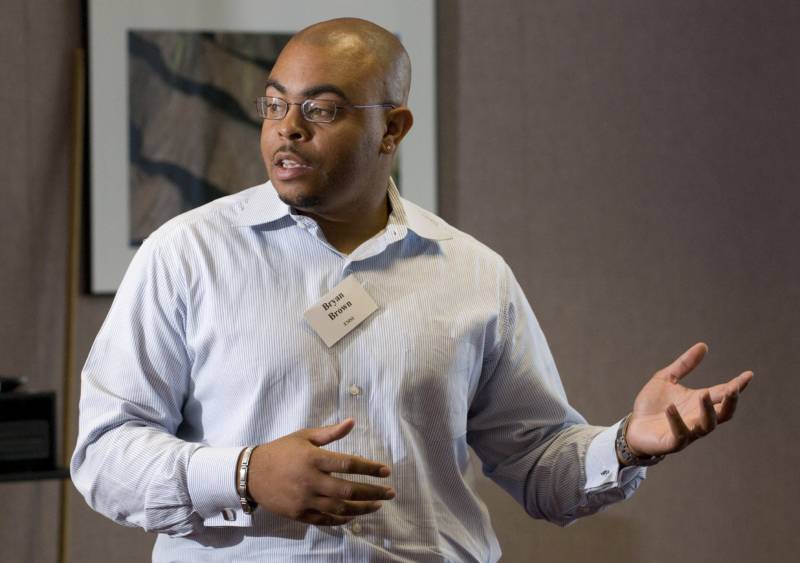A combination of preconceptions, stereotypes and misunderstandings keeps many students from fulfilling their potential as scientists, a Stanford education professor asserts in a new book called “Science in the City.”
Bryan Brown, an Oakland native and former high school science teacher, maintains that young black and Latino students understand scientific concepts, but not in the way their teachers describe those ideas. He told KQED’s Brian Watt that can lead to frustration all around. Here are excerpts from their conversation, edited for length and clarity:
You’ve been running science camps at Stanford for fifth and sixth graders. What have these students been telling you about science education?
The brilliance of these kids is often not reflected in the ways they communicate. And so in my time as a teacher, one of the things that has been really shocking to me is the distance between how we allow the kids to represent what they know and then what we expect of them. We almost expect kids to speak like little scientists when what they know is learned in the context of their community. We should be listening for the brilliant science that sounds like the neighborhoods they come from.
How might some brilliance be lost in translation on a science teacher?
I’ll give you an example. We studied baseball, and the kids had ways to distinguish between directional velocity — how fast the ball is changing directions. The phrase that they use was “the ball has a lot of movement. It had bite, it would fall off the table.”
But when they spoke of speed, they used the word “velocity,” the exact opposite of the physics term for velocity, which is about representing directional change. So although the language and the culture of baseball enabled the kids to make this scientific distinction, it would be invisible for the teachers because they are looking for language expressed in the academic way, which is not taught in the (kids’) classroom.
So how do middle and high schoolers who are interested in science navigate this gap?
What I’m really arguing for is that teachers rethink how they think about learning. I’ll put it this way: When you’re in a Spanish class, you’re getting new words for old ideas. You’re still talking about chairs and tables, but they’re just new words. When you enter a science classroom, you’re getting new words and new ideas simultaneously. And the cost of that is kids often feel intimidated, and they simply don’t understand. But the other (side) of the coin is then we don’t hear the brilliance that the kids have, because we’re listening for science language when the ideas are right there in front of us.
When you were coming up as a student, did you learn about scientists other than, say, George Washington Carver and Dr. Charles Drew? Did you imagine yourself in their number?
You have offered the two names that are shared in the African American community so readily. The irony is, right now, we’ve never seen the numbers of African American scientists getting advanced degrees that we’ve seen today. And so you don’t need to do a historical analysis to find representations of who a scientist of color can be.
All you need to do is connect kids to the actual scientists that are out there, and they are out there in growing numbers, which I think is something we really don’t understand. This is where African American institutions play a big role; 38 to 39% of all advanced degrees in science [received by African Americans] come from historically black colleges and universities.
In Oakland, I was often introduced to doctors and dentists who could serve as role models for me. So I didn’t have to look far for representation of how science could be something for me.
How can parents, teachers and other adults foster kids’ interest in science?
If you give a kid an experiment, some test tubes, and let them play around with science, you’re going to foster a love for science immediately. I taught in urban contexts where there were some challenges in the community, but the moment those kids crossed the threshold to the classroom, everyone became a scientist.
So I would argue first that there is no greater way of accessing science than to do science and do it early. The good news for parents is, you don’t need to be an expert. You can learn together. YouTube provides a wealth of resources for you to just take on experiments and do them at home. And so the best thing is to provide kids a vision of who they can be is just to do science with your child.
